Cabbages work well here – at least if planted as late as possible in the fall to grow over the winter. That way they avoid most of the bugs, flies, caterpillars, and slugs that make them look like Swiss cheese otherwise. Of course without freezing temperatures you still have to regularly check the underside of the leaves and pick off caterpillars and eggs. Cabbages have no problem at all with colder temperatures and as soon as the weather gets warmer you can watch them grow bigger by the day.
Since we don’t care that much for kale, broccoli, or regular round cabbage (and they’re very inexpensive to buy) I focus on cauliflower which does very well and produces lovely white heads by early spring. Every now and then I also try Brussel sprouts although the sprouts tend not to get that big for me. And I love exotics like Cima di Rapa.
Cauliflower
I buy cauliflower seedlings from the garden center and plant them as late as possible, not before October, to avoid most of the cabbage-loving insects. They are ripe in March and April and so far have always worked out exceedingly well, with minimal feeding and watering.
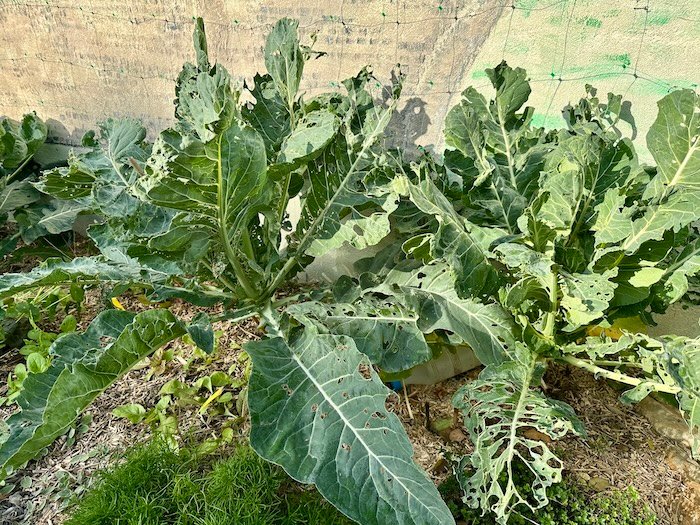
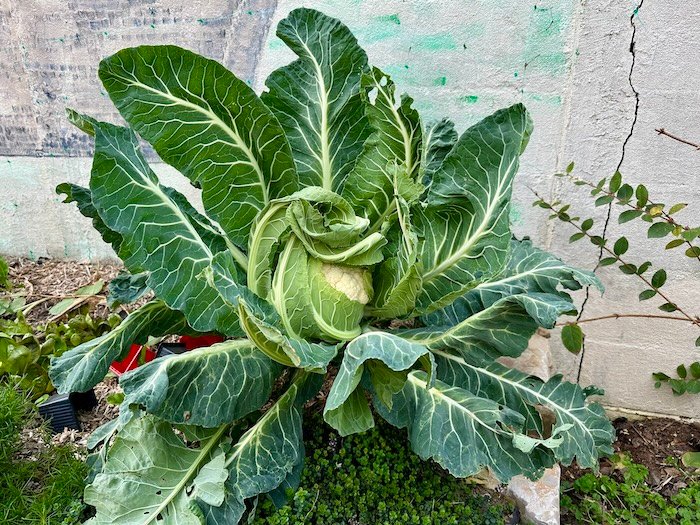
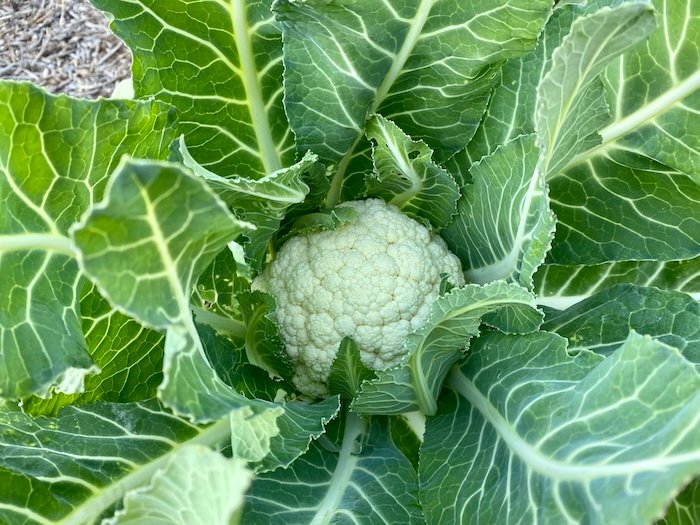
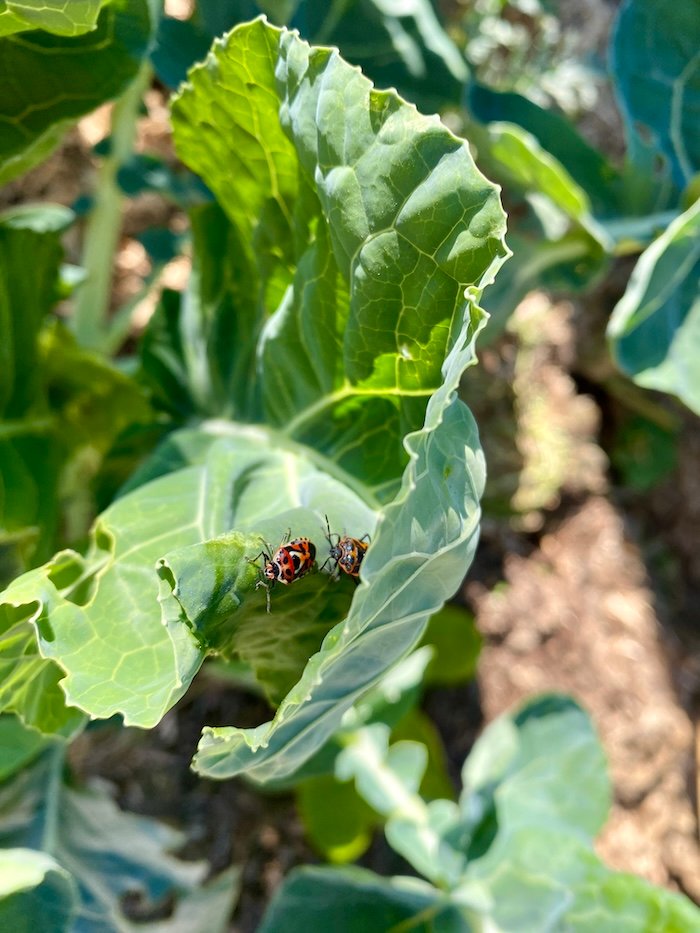
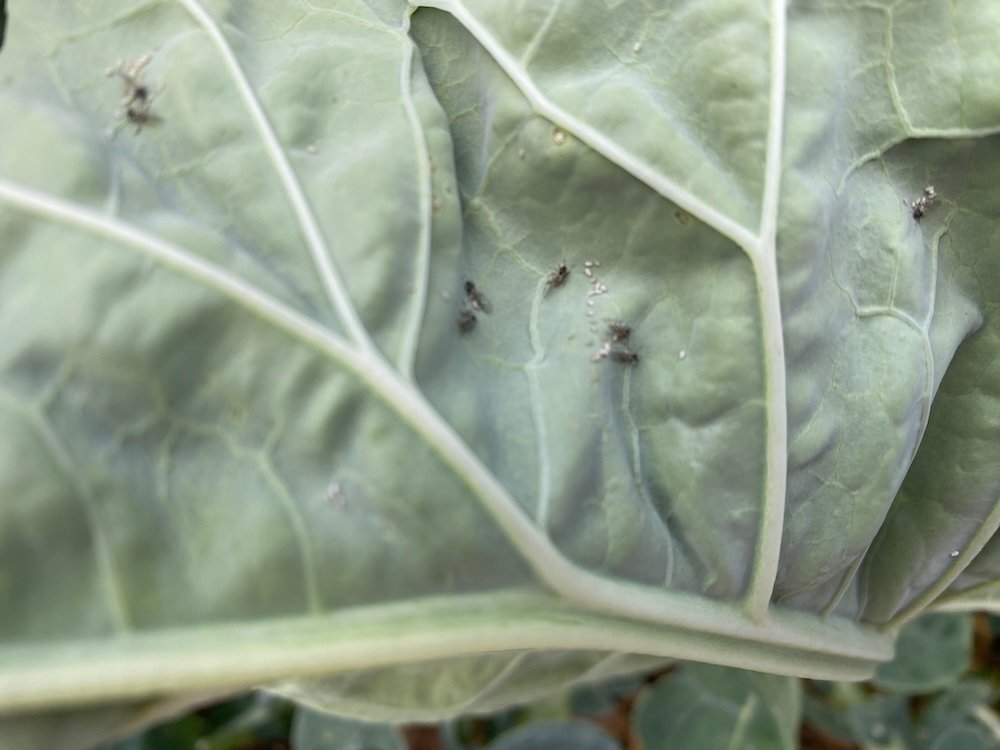
Cima di Rapa
Garden centers don’t offer seedlings but sowing Cima di Rapa works pretty well, even if it takes a long time before the plants really take off and grow. I sow them in September and by April they’re ready to be cut (repeatedly) and eaten. Cima di Rapa is a variety from Italy. It smells like cabbage and has a mild, slightly bitter and sweet flavor if cut as long as the flowers are closed. Once the flowers open the flavor intensifies. For the kitchen the flower buds, leaves and stems are used. They are blanched and can be served with pasta, gratineed or simply blanched as a vegetable side dish.
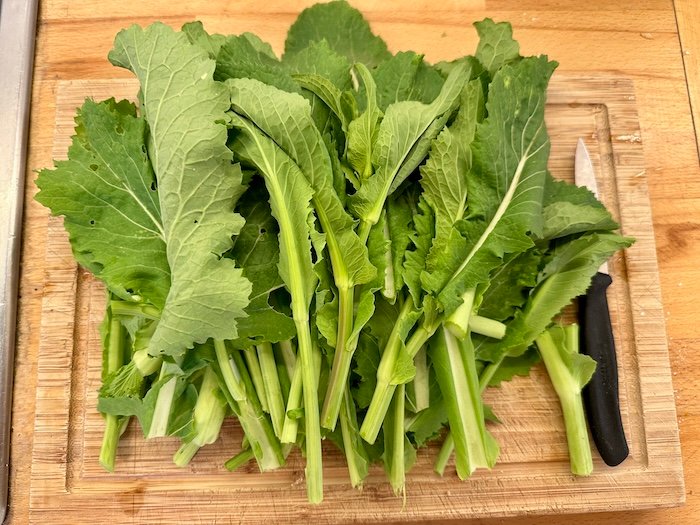
Perpetual “tree” cabbage
I’m not quite sure what to call this, finding it under various names online: perpetucal cabbage, perennial cabbage, tree kale… It forms a thick hard stalk and keeps on growing cabbage leaves at the end of it and even tiny little cauliflower-like heads that can be cut off again and again and used in the kitchen.
Since it’s perpetual it also grows in the summer and there we have the afore-mentioned insect problem. And it tastes pretty cabbagey. So on the whole it was not that much fun to have in the garden and I took it out again.

Leave a Reply